— Giuseppe Notarbartolo di Sciara, Tethys Research Institute, Milano, Italy
— Mahmoud Fouad, Egyptian Environmental Affairs Agency, Cairo, Egypt

On 7 April, during a recent trip along Egypt’s Mediterranean coast to establish stakeholder contacts in implementing a National Action Plan for the Conservation of Cetaceans in that country, funded by the Regional Activity Centre for Specially Protected Areas (RAC/SPA) of Tunis, we were informed by the local community of Marsa Matrouh of a spate of monk seal sightings in the area. The news had generated considerable excitement, since the species has long been considered extinct in Egypt.
In a meeting at the offices of the Director of Environmental Affairs of the Marsa Matrouh Governorate, fishermen reported that seals had been observed several times during the previous 10 days. Mr. Abd El Malek in particular, a fisherman about 60 years old, was very clear. He had begun noticing that something was pulling fish out of his trammel nets, “in a very professional way”, i.e. without breaking the mesh. His boys had told him that they had seen a very strange animal around the nets, similar to those they had watched on TV, in the “yellow square” (National Geographic) eating penguins under the ice. At first he didn’t believe them: throughout his life, he’d never seen a seal in these waters; other fishermen said the same. After several attempts, however, they indeed caught a glimpse of a seal resting on one of the small sandy beaches along the local rocky coastline, and managed to take a few pictures and even a short video with their cell phones. Other fishermen agreed, asserting that they had frequently seen up to five seals during the same period, in a location about 5 km away from the first, and that their nets had been completely destroyed.

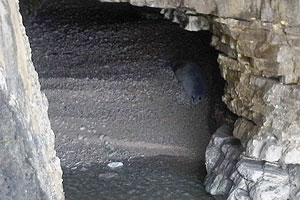
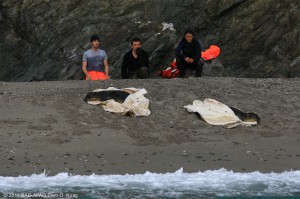
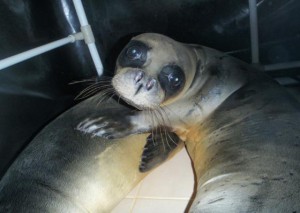
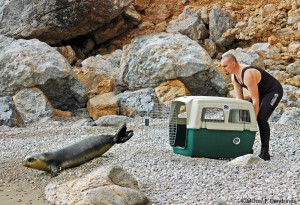
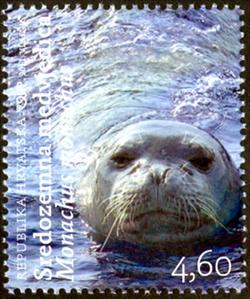 A new postage stamp commemorating the critically endangered Mediterranean monk seal has been issued by the Croatian postal service, Hrvatske pošte, reports Jasna Antolovic, of the Zagreb-based NGO
A new postage stamp commemorating the critically endangered Mediterranean monk seal has been issued by the Croatian postal service, Hrvatske pošte, reports Jasna Antolovic, of the Zagreb-based NGO